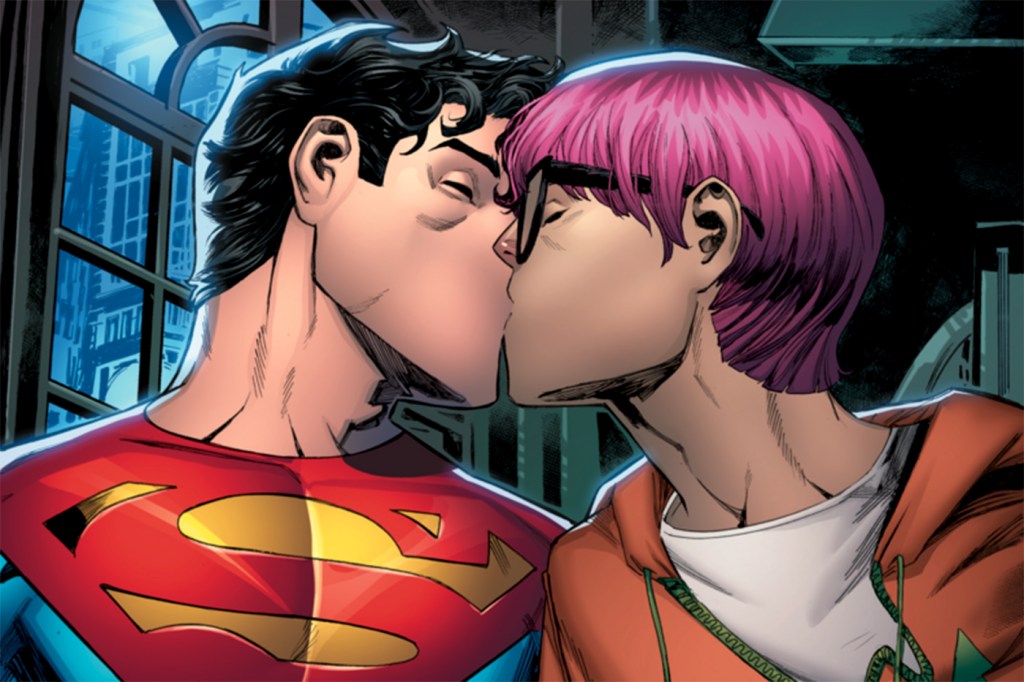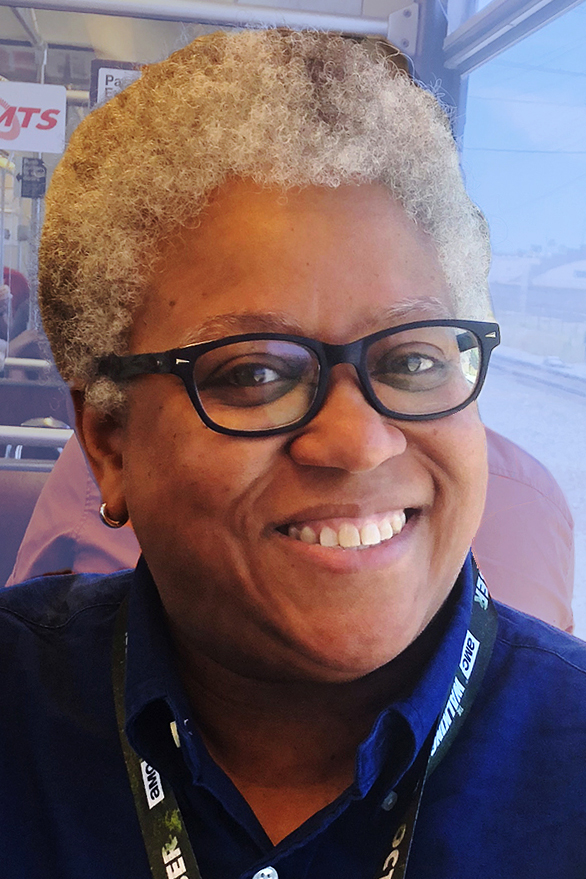Here’s why it is–and it isn’t–a big deal that Superman is bisexual

This month, Superman came out as bisexual. The creators of the DC comic series “Superman: Son of Kal-El” revealed that the new Superman—Jon Kent, who is the child of Clark Kent and Lois Lane—has a new love interest: Jay Nakamura, a reporter in the series.
“Superman’s symbol has always stood for hope, for truth, and for justice,” series writer Tom Taylor says in a statement released by DC Comics. “Today, that symbol represents something more. Today, more people can see themselves in

Ajuan Mance is an illustrator and English professor at Mills College in Oakland, California. Courtesy photo.
the most powerful superhero in comics.”
That’s particularly true for younger comic book readers, says Ajuan Mance, an
illustrator and English professor at Mills College in Oakland, California. Northeastern announced a merger with the college earlier this year that will establish Mills College at Northeastern University in July 2022.
Nearly 17 percent, or about one in six, members of Gen Z identify as LGBTQ, according to a recent Gallup poll. And taken as a whole, 5.6 percent of U.S. adults identify as such, the poll shows.
“When that many young people identify as LGBTQ, it means that most people in that age group know someone who does, too,” says Mance, whose professional interests include pop culture in the U.S. “So, the choice [to make Superman bisexual] just reflects the younger generation as it really exists today. The question might end up being in the reverse, eventually: Why is every character cisgender and straight?”
Mance discusses the new Superman, and more.
What do you see as the role of comics in our culture more broadly? Do they have more latitude to portray characters with different identities?
Comic books and graphic novels—particularly those aimed at a young adult audience—just have a lot more flexibility to represent a lot of different truths and identities that we don’t see in mainstream media at all.
In some ways, that’s the result of the barrier for entry for say, television or film: The sheer amount of money that’s required to mount a television program, even on cable, even on Netflix, it’s very costly. But when you’re making a comic or a graphic novel, all you really need are an illustrator and a writer, and sometimes that’s the same person.
Can you situate Jon Kent within comic book canon?
There are a few things that are interesting about this development, but I’ll start with what’s not necessarily interesting. The major companies—DC, Marvel, and Archie—have delved into the area of queer and trans representation before.
Marvel introduced, in a positive representation, Northstar, in 1992, as a queer protagonist. The comics had been easing into depictions of LGBTQ people that were not pejorative starting around the early 1980s. They weren’t superheroes or main characters, but we begin to see some of the heroes interacting positively with a character where it’s implied that that character is a queer person. And in terms of main characters [being queer], those have been 21st century developments.
So, the idea of a mainstream companies doing a queer character is not that unusual. But whenever they make a change in one of the big franchises—Batman, Superman, Spiderman—it can rankle people quite a bit, especially people who grew up with a particular narrative that usually involved a character and a particular romantic alignment, like Superman, for example.
But I think the idea of making it not [the original] Superman, but someone in Superman’s world who is from a younger generation, reflects the younger generation as it really exists today. So it’s not a taboo thing, or even that unusual, to encounter queer characters in their media.
Let’s go back to the idea that introducing queer characters can rankle some people, because this one certainly did. What’s behind that?
I blame my generation, as a Gen Xer, in some ways. People become very wedded to the existing structures of those media products that helped usher them into their love of science for example, or that were particularly powerful escapist media when they were in their teens or tweens.
It’s also a rapidly changing world in which we live—technologically, culturally, demographically—and I really do think the massive pushback against some of the transformations we see is a way of expressing something else. It’s a way of expressing regret, or a fear that the world is changing too quickly for you to keep up. And it’s rarely about the issue at hand.
Superman in particular, I think, also serves as such an example of American masculinity. Does that representation play a role here, too?
I think that for some people, it is disturbing that masculinity is conflated with heterosexuality. What people will refer to as cisnormativity has a whole slate of behaviors and affections attached to it. I think for some demographics there is a binary notion that there’s masculinity and there’s gayness—and that masculinity has a sexual orientation in the same way that sometimes gender has a race. There are these odd binaries that leave people out, and masculinity is one of them.
What do you see as the significance of this decision, then?
One of the main things I thought about is that the major comic companies don’t have the same fears that they did 15, 20 years ago about introducing LGBTQ characters. They’ve realized or decided that the monetary gain and the visibility is worth whatever pushback they get. I think they understand the pushback better in terms of how little of the reading audience it truly represents.
Graphic novels depicting young adults who are nonbinary, trans, queer kids are big sellers. They’ve won a lot of awards, gained a lot of visibility, and it absolutely makes sense for the [major companies] to step in and seize upon that.
The demographic has already demanded, and is eating up, these LGBTQ stories in the form of graphic novels, and I think comic companies see a financial advantage in getting on board—the audience loves this content.
For media inquiries, please contact Shannon Nargi at s.nargi@northeastern.edu or 617-373-5718.





